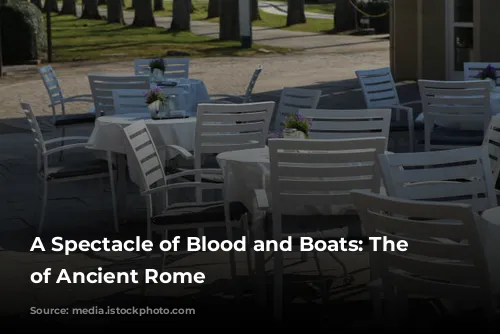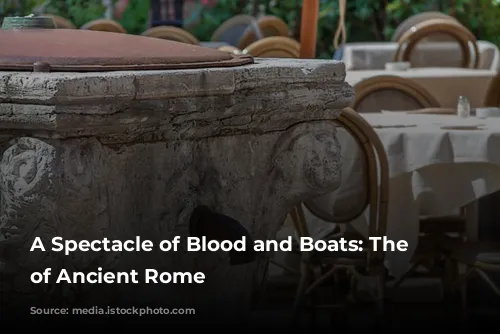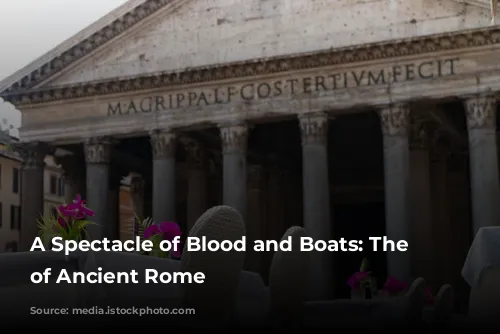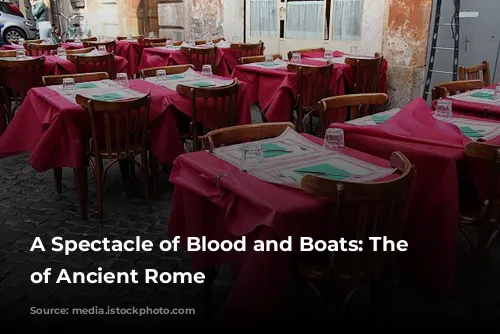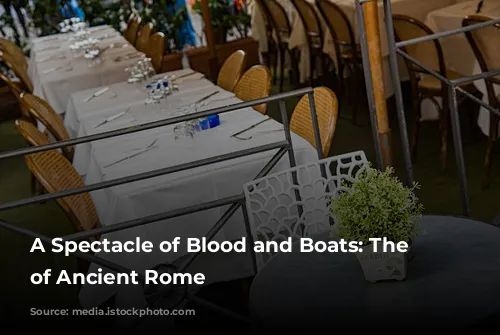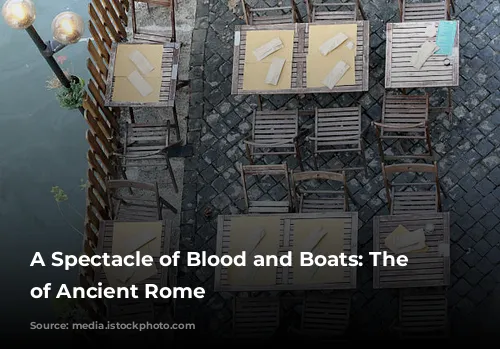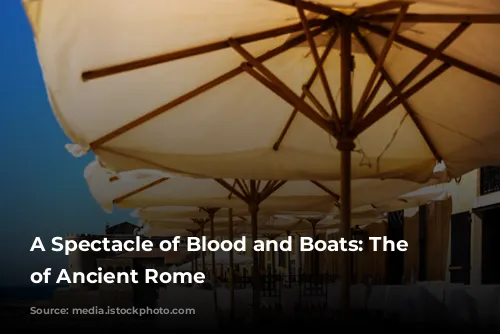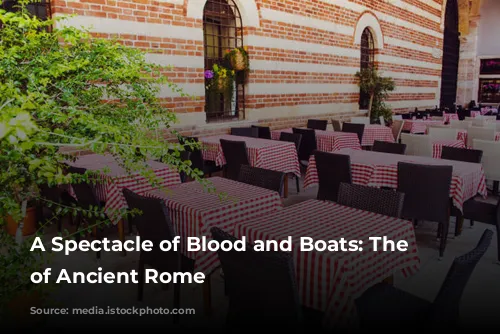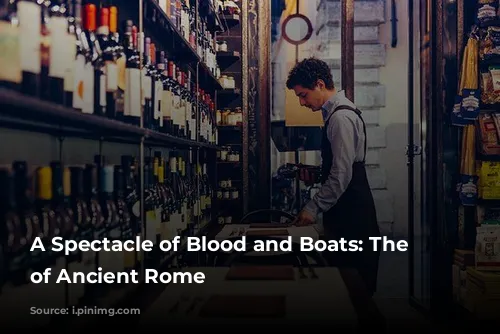Imagine being the party planner for a simulated naval battle in ancient Rome. You’re not just throwing a birthday bash for your friends – you’re planning a naumachia, a massive spectacle of water, warfare, and brutality that rivals any modern-day blockbuster film.
Logistics of a Naumachia: A logistical nightmare
Just picturing the scale of this undertaking will give you chills. Envision a vast body of water, either a natural lake, a specially constructed basin, or even an arena transformed into a watery battlefield. This isn’t just a splash-and-dash – it’s a complex, multi-faceted operation. Consider the mammoth tasks:
- Filling the venue with water – a challenge in itself, especially for the larger events.
- Recruiting the combatants – condemned criminals and prisoners of war, forced to fight to their deaths for the amusement of the crowd.
- Gathering the weapons – sourcing, managing, and deploying the right equipment for a seafaring conflict.
- Organizing the spectators – keeping the crowds under control, managing their expectations, and ensuring their safety.
- Procuring the ships – from the humble bireme to the mighty quinquereme, each vessel demands its crew, oarsmen, and fighters.
- Orchestrating the fighting – managing the flow of battle, ensuring drama, and keeping the emperor entertained.
- Enhancing the spectacle – importing sea creatures, ensuring the presence of brothels, and keeping everyone in line to ensure a truly memorable experience.
- Keeping the emperor pleased – the ultimate goal. A single misstep, and you could end up swimming with the fishes yourself!
A Feast for the Eyes (and the Stomach)
The naumachiae, while captivating and elaborate, weren’t just a single-day affair. They were often part of multi-day celebrations, filled with other extravagant activities like music, horse racing, gladiatorial contests, and even elephant fights. The sheer grandiosity of these events, the sheer scale of the naumachia, made them a spectacle unlike any other.
Imagine a vast arena filled with the roar of the crowd and the splash of waves. Ships clash in a thrilling spectacle of skill and brutality. Thousands of spectators, their eyes glued to the battle, are caught in the excitement. It’s a spectacle that both thrilled and terrified the Roman populace.
The Naumachia: A Legacy of Violence and Entertainment
The first recorded naumachia, organized by Julius Caesar in 46 BC, was a grand celebration in honor of his military achievements. This spectacle involved 4,000 oarsmen and 2,000 fighting men, clashing aboard ships representing the Tyrian and Egyptian fleets.
The chaos and excitement of these events were not without consequence. The frenzied crowds packed into narrow streets, often causing accidents and even trampling deaths. The lure of the spectacle was strong, even if it meant risking one’s life.
But the naumachia was not just a spectacle of violence. It was also a celebration of sexuality, a time for debauchery and pleasure. Brothels thrived during the event, and the crowds revelled in the opportunity for anonymous encounters.
A Symphony of Violence: The Naumachiae of Emperors
The later emperors of Rome, eager to outdo their predecessors, continued to host naumachiae. Augustus in 2 BC, Claudius in 52 AD, Nero in 57 AD, and even Titus in 80 AD all staged their own variations on the spectacle, each grander than the last.
Claudius’ naumachia involved a staggering 19,000 soldiers and 100 ships, while Nero’s was held in a wooden amphitheater filled with seawater and even featured imported sea creatures. The sheer ambition of these emperors is reflected in the scale of these events.
A Final Act of Violence
Even the mighty Colosseum, the ultimate symbol of Roman spectacle, was not immune to the naumachia. While the details are scarce, a violent rainstorm during a naumachia in 86 AD led to the tragic demise of both combatants and spectators.
While the logistics of such an event are a marvel, it’s hard to imagine the Romans somehow managing to pump enough water to float a fleet of ships into the Colosseum. It’s a testament to the ambition and audacity of the Romans.
The naumachiae, with their spectacular scale, bloody battles, and raucous crowds, are a window into the entertainment and violence of ancient Rome. These events, while seemingly impossible to recreate today, continue to fascinate and terrify us with their sheer scale and the ruthless brutality that defined the ancient world.
